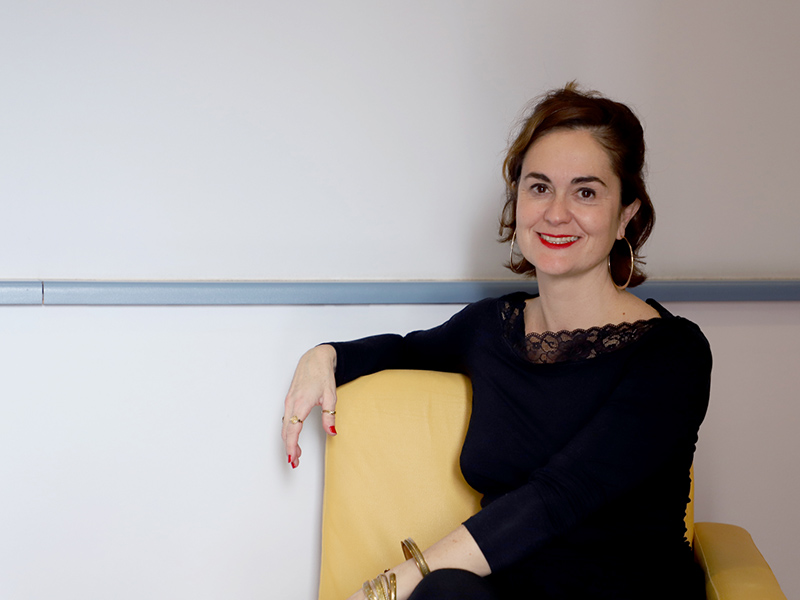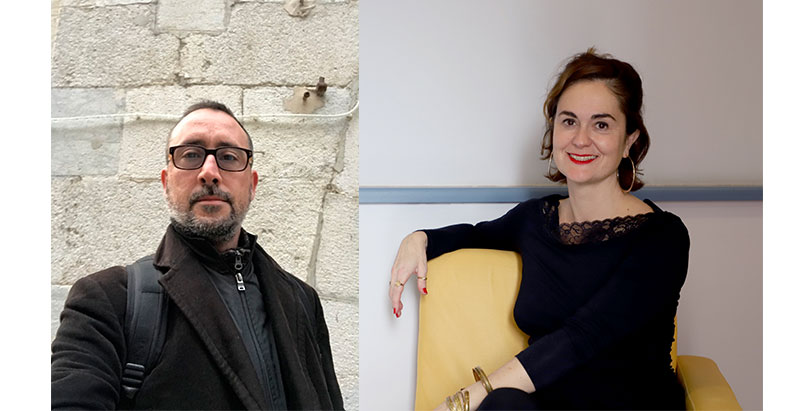Anthropology joins the battle to tackle TB in the most vulnerable members of society in a new multi-disciplinary project

Cristina Vilaplana and Adrià Pujol-Cruells of the Experimental Tuberculosis Unit at the IGTP have used a novel approach to TB research and applied anthropological methodology to make recommendations on how the set up a patient-oriented approach to treat tuberculosis (TB). The project is part of the research line led by Vilaplana, focussed on the psychosocial aspects of TB and the first results have been published in Frontiers in Medicine. This holistic approach addresses the socio-economic factors that often prevent patients accessing and completing treatment. It requires the health providers to involve patients, to take their preferences, needs and values into account and to set up a complete approach that also includes mental health and social aspects.
Although cases of TB are falling each year, there were still 10 million cases and 1.3 million TB-related deaths in 2017 according to the World Health Organization (WHO). As in all western countries incidences in Spain are falling, but unevenly across the population; two key issues being a higher number of cases in cities and delays in diagnosis. Barcelona is an ideal laboratory for studying and treating TB as its Public Health Agency has been operating a control programme for 30 years which allows information to be shared by clinical TB units, case managers, public health nurses and other healthcare agents.
"Despite this excellent organization, the system is failing some of our most needy citizens," says Vilaplana. "Healthcare staff are aware of the problem and try to do their best, but it's difficult because the infrastructure is just not there," she adds. "The aim of this project is to use both quantitative and qualitative approaches and to be able to affect better strategies for prevention and helping people follow the treatment. Building a more holistic approach that tackles issues of poverty, mental health and social exclusion would enable the most vulnerable patients to access and complete TB treatments. This is exactly what the WHO Guidelines recommend: the adoption of patient-centred disease management.”
There is a lot of good quality data about the incidence of TB infection and the success of treatments, in this study Vilaplana has taken a different approach by including the anthropologist Adrià Pujol-Cruells in the team so he could study TB in Barcelona from an anthropological point of view and devise proposals for a more inclusive programme to tackle the disease. The study confirmed that the typical TB patient in Barcelona is an immigrant (although not always) who has difficulty entering the social and working environment of the region, often with severe language and communication problems. They suffer from social exclusion because of personal, cultural, family or legal reasons. The chronic nature of the disease and the associated disability and occasional hospitalization can worsen this, making it difficult for people to work, find a place to live or to socialize. Although health workers are fully aware of this they have no mechanism to help beyond voluntary actions.
 The result of this study is a structured list of specific proposals to implement a patient-centred approach in the Barcelona area, with guidelines on how to cost the programme and set up a pilot scheme. The project would require the setting up of multi-disciplinary teams, involving the present players and some new ones, such as NGOs, the use of available public spaces, such as libraries, gyms and museums for activities and the provision of budget specifically for this task.
The result of this study is a structured list of specific proposals to implement a patient-centred approach in the Barcelona area, with guidelines on how to cost the programme and set up a pilot scheme. The project would require the setting up of multi-disciplinary teams, involving the present players and some new ones, such as NGOs, the use of available public spaces, such as libraries, gyms and museums for activities and the provision of budget specifically for this task.
"The task is not simple," explains Pujol-Cruells. "Our interventions focus on two main areas; firstly in the diagnostic and treatment centres and secondly areas of high incidence, where we would focus on patients and their families on the one hand and on the general population on the other." The activities are varied and structured, ranging from leisure activities to coaching, mentoring and group sessions, education for patients and healthcare staff and lots of communications activities. One particularly important aspect is the involvement of patients and people who have been cured as "experts" taking part in the process to help build confidence and provide vital input.
"We have to bring the treatment to the patients; as well as studying the disease in the laboratory we also need to know how it and its treatment affect the people who have the disease. We need to cure people, as well as get rid of diseases. This type of multi-disciplinary approach gives us a much broader view of what is really going on," says Vilaplana.
The aim of this project is not only to provide access for these patients to cures and help them sustain the long treatments for TB; it is also to break the vicious circle of poor health and social exclusion. Many of these people suffer from other diseases too, which would also be addressed under this system. The only way to reduce TB incidence in our society is to provide an escape from it to our most vulnerable members.
Original Paper
Front. Med., 26 November 2019 https://doi.org/10.3389/fmed.2019.00273
Adrià Pujol-Cruells and Cristina Vilaplana*
Funding information
This work was supported solely by the Experimental Tuberculosis Unit (UTE)funds. Dr Vilaplana has a Miguel Servet II contract funded by the Instituto Carlos III (ISCIII,
